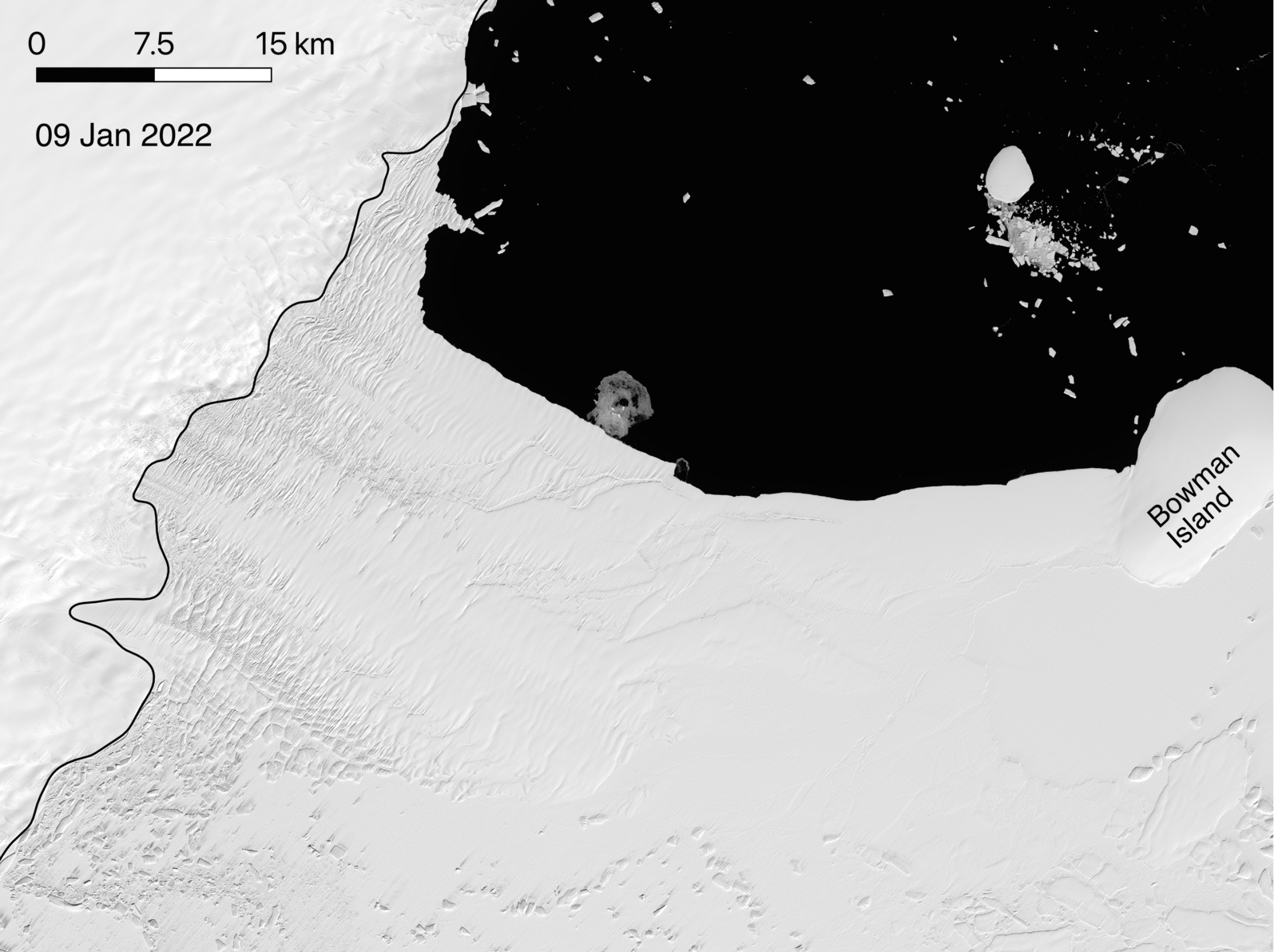Ice Shelf Collapse
Much of my research focuses on Antarctic ice shelves, and marine-terminating glaciers in both Greenland and Antarctica, which are major contributors to sea level rise (SLR). Ice shelves are floating sections of ice that make up more than 50% of the Antarctic coastline. While ice shelves have already made their contribution to sea level rise, mass loss from land- and marine-terminating glaciers in Antarctica and Greenland makes up approximately one-third of SLR each year. Ice shelves and glaciers around the edges of both continents hold back between ~58 m (Antarctica) and ~7 m (Greenland) of sea level equivalent. It is important to understand the mechanisms controlling the rate at which mass is lost and how that will change. My research focuses on the two main mass loss mechanisms at the ice-ocean boundary: iceberg calving and basal melting at the ice-ocean interface.
Despite the known key role that ocean forcings play in concert with ice dynamics to re- or de-stabilize ice shelves and glaciers, our ability to predict future outcomes remains limited because drivers of retreat and ice-ocean feedbacks are still not well understood.
Recently, we've been studying two specific instances of ice shelf collapse: the West Ice Shelf and the Conger Ice Shelf, both found in East Antarctica.

The Conger Ice Shelf in East Antarctica collapsed in March 2022, the first ice shelf in that region to do so. This series of images (from Landsat and MODIS) show its collapse over just ~2 days.